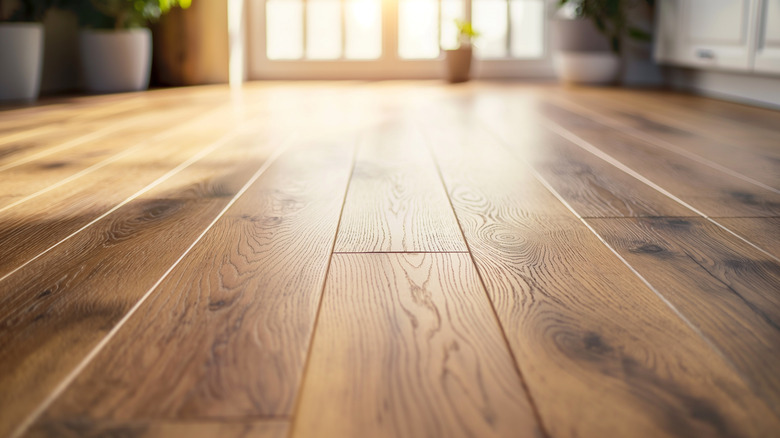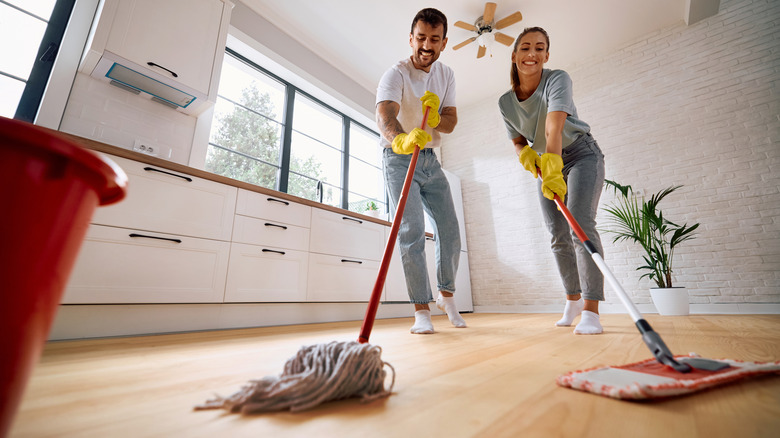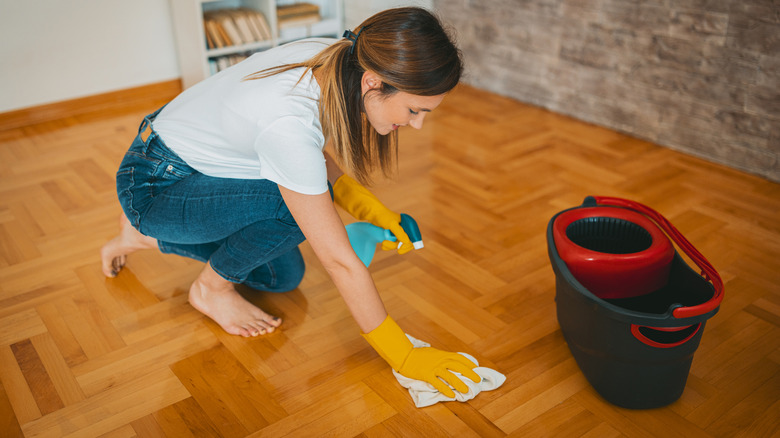This Popular Cleaning Tool Could Be Wrecking Your Wood Floors
Microfiber spin mops clean better and last longer than cotton mops, so they may seem like a no-brainer for cleaning your wooden floors. But the same features that give microfiber its durability and cleaning ability can also damage wood flooring. Microfiber is made of synthetic fibers that are much smaller than the diameter of a human hair. That means these fibers can get into small spaces to clean out more dirt and germs than traditional fibers, such as cotton.
They can also absorb up to eight times their weight, making them ideal for sopping up messes but less than ideal for cleaning wood surfaces. With microfiber spin mops, you dip them in water, then put them in a spinner to get rid of the excess water. You can also upgrade your spin mop for even better results. However, because of the nature of microfiber, even after spinning, there's a tremendous amount of water left in the mop. When you put the mop on the floor, it's much wetter than a cotton mop, so it can saturate the wood.
How wet mopping damages your wooden floors
No matter what hardwood floor type you choose, all wood is organic and susceptible to changes in temperature and humidity. It absorbs water and swells up in response. If the moisture content of wood reaches 20%, it will start to rot. Although that's more likely in the event of flooding than wet mopping, it's a good indicator of how much water can damage wood.
Cupping and crowning are two common problems that can happen when hardwood floors are repeatedly exposed to too much water. Cupping is when each floorboard is higher on the sides than in the center, a sign that the underside of the floorboard has been exposed to more water than the top. Crowning is the opposite condition. It's marked by floorboards that are higher in the middle than on the sides, and it's an indication that the top of the floor has been exposed to more water than the bottom. Crowning is more likely if you're wet mopping your floors too often, but cupping can also happen if water seeps through the cracks in your floor and saturates the bottom of the floorboards.
How to safely mop your wood floors
You don't have to give up on microfiber mops completely to protect your wooden floors. The key to taking advantage of its good qualities without sacrificing your floors is to use it with a spray cleaner. You can spray on your preferred brand of wood cleaner on the floor — make sure it's compatible with your finish — and mop it up with a microfiber mop. You can also use a spray mop with a microfiber pad that is specifically designed for hardwood floors. Both of these options allow you to control the amount of moisture that ends up on your floors.
The easiest way to clean hardwood floors is to keep them from getting too dirty in the first place. For best results, wipe up any spills immediately and sweep, dust, or dry mop your floor daily. Vacuum them once a week, and save damp mopping for every other week. This routine will keep your floors clean and protect them from unnecessary exposure to water.


